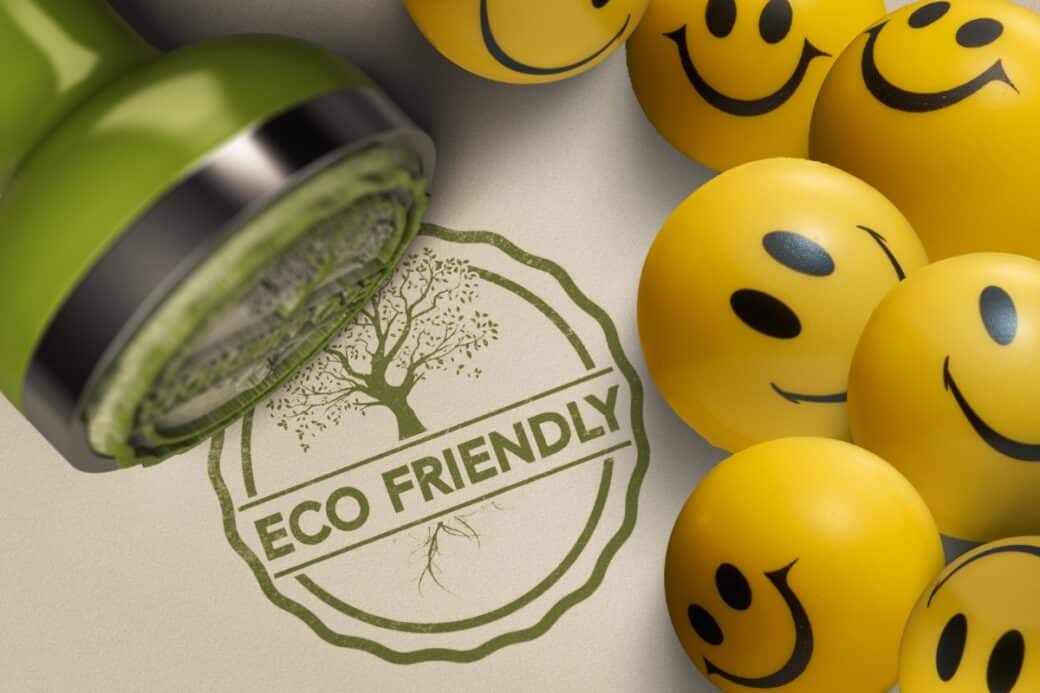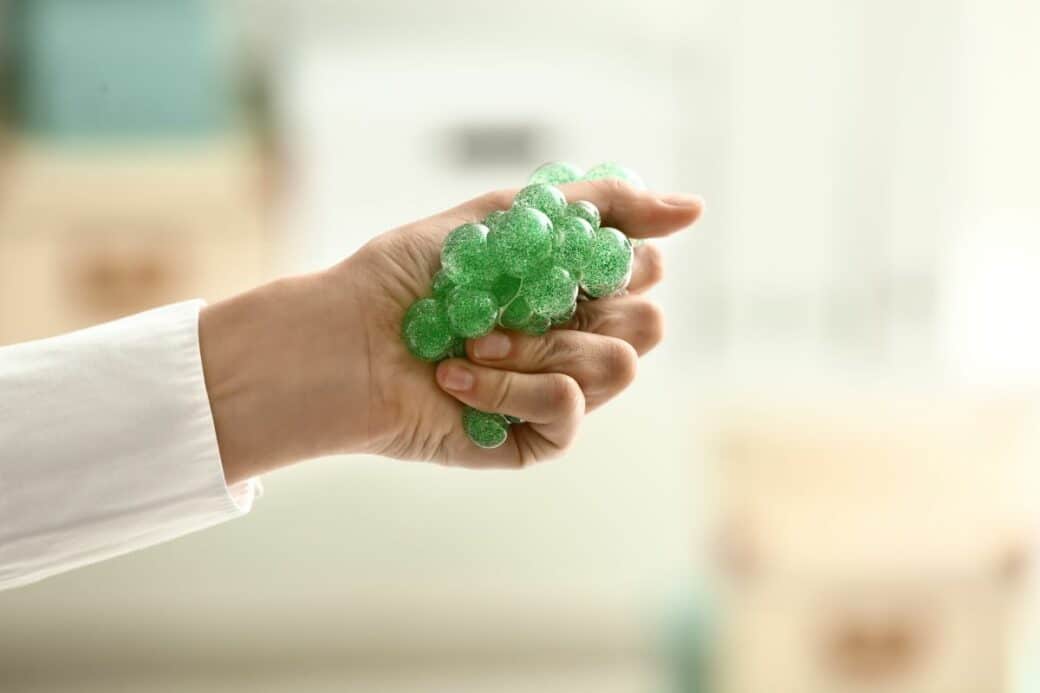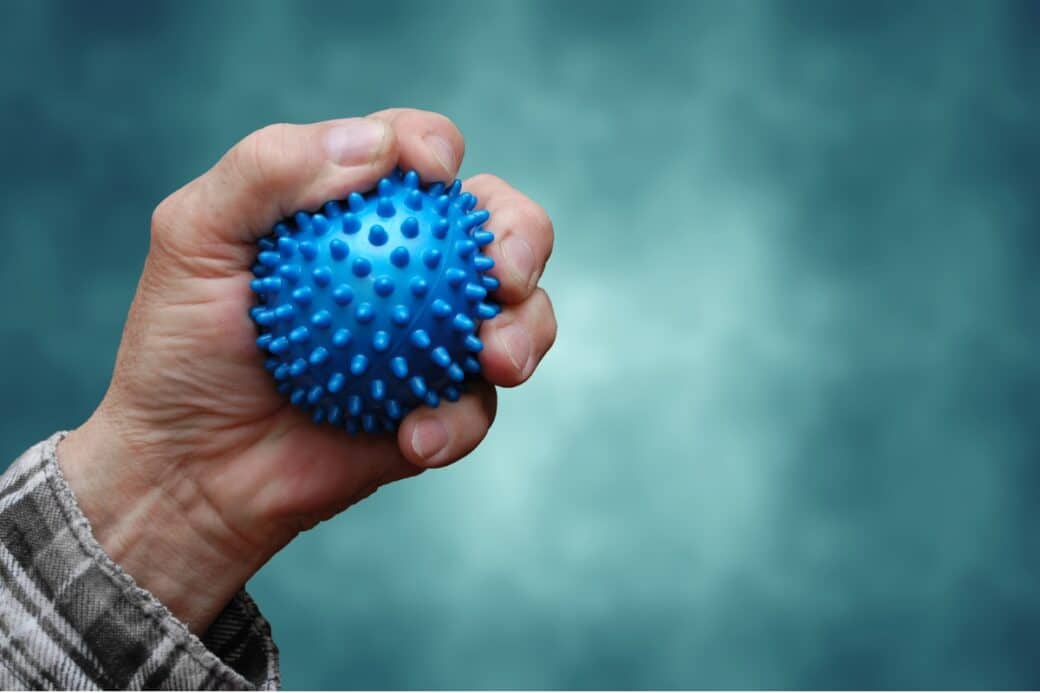Are you a fan of stress balls? Ever wondered if they are eco-friendly? In this article, we will explore the environmental impact of stress balls and shed light on whether they align with the “Go Green” movement. Join us as we delve into the world of stress balls and discover if they can be a sustainable solution for relieving stress.

Are Stress Balls Eco-Friendly: Understanding the Concept of ‘Going Green’

Definition of ‘Going Green’
In today’s world, the term “going green” has become increasingly popular. But what does it really mean? Going green refers to adopting practices that are environmentally friendly and sustainable. It involves making conscious choices and taking actions that reduce our impact on the planet. By incorporating green practices into our daily lives, we can contribute to the preservation of natural resources, the prevention of pollution, and the overall well-being of our planet.
Importance of Green Practices
The importance of green practices cannot be overstated. Our planet is facing numerous environmental challenges, such as climate change, deforestation, and the depletion of natural resources. To address these challenges, it is crucial that individuals, businesses, and organizations embrace green practices. By doing so, we can reduce our carbon footprint, conserve water and energy, minimize waste generation, and protect biodiversity. Green practices not only benefit the environment but also contribute to our own health and well-being.
The Role of Companies in Environmental Sustainability
Companies play a vital role in promoting environmental sustainability. They have the power to make significant changes in their operations and supply chains that can positively impact the environment. By adopting sustainable manufacturing processes, reducing emissions, and implementing recycling and waste management programs, companies can reduce their carbon footprint and minimize their environmental impact. Additionally, companies can invest in research and development to create innovative, eco-friendly products and promote responsible consumption among their customers. Through these actions, companies can be leaders in environmental sustainability and inspire others to follow suit.
A Look at What Stress Balls Are
Explanation of Stress Balls
Stress balls are soft, squeezeable objects designed to provide relief from stress and promote relaxation. They are usually made of a pliable material that can be easily squeezed or molded. Stress balls come in various shapes, sizes, and colors, and they are typically filled with a gel or foam-like substance. When squeezed or manipulated, stress balls offer a tactile experience that can help alleviate tension, improve blood circulation, and reduce muscle stiffness. They are commonly used in offices, classrooms, and homes to help individuals cope with stress and anxiety.
The Popularity and Uses of Stress Balls
Stress balls have gained immense popularity in recent years due to their effectiveness in stress relief and relaxation. As the demands and pressures of daily life increase, more and more people are turning to stress balls as a simple and accessible tool for relaxation. Stress balls can be used in a variety of settings and situations, such as during work breaks, while studying, or even during meditation and yoga practices. Their portable nature makes them convenient to carry around and use whenever needed. The versatility and ease of use of stress balls have contributed to their widespread use and popularity among individuals seeking stress relief.
Different Types of Stress Balls
Stress balls come in a wide range of types, each offering its own unique benefits. Traditional stress balls are typically made of a pliable material, such as foam rubber or polyurethane, and offer a firm yet malleable texture for squeezing. These types of stress balls are known for their durability and long-lasting performance. Another popular type of stress ball is the gel-filled or liquid-filled stress ball. These stress balls provide a fluid-like sensation when squeezed, offering a different tactile experience. Some stress balls are also designed with additional features, such as textured surfaces or aromatherapy properties, to further enhance relaxation and stress relief.
Material Composition of Stress Balls
Common Materials in Making Stress Balls
Stress balls are made from a variety of materials, each with its own characteristics and properties. The most common materials used in the production of stress balls include foam rubber, polyurethane, thermoplastic elastomers (TPE), and natural rubber. Foam rubber stress balls are lightweight, soft, and flexible, making them ideal for stress relief. Polyurethane stress balls offer similar qualities but are more durable and resistant to wear and tear. TPE stress balls are known for their environmentally friendly nature, as they can be recycled and reprocessed. Natural rubber stress balls are made from latex, which provides a soft and squishy texture.
The Manufacturing Process of Stress Balls
The manufacturing process of stress balls involves several steps to transform raw materials into the finished product. First, the chosen material is mixed with additives and coloring agents to achieve the desired texture and appearance. The mixture is then poured into molds, where it is left to cure and solidify. Once the stress balls have solidified, they are removed from the molds and trimmed to remove any excess material. The stress balls may undergo additional treatments, such as printing or embossing, to add branding or design elements. Finally, the stress balls are packaged and prepared for distribution.
Innovations in Stress Ball Materials
In recent years, there have been innovative developments in stress ball materials to enhance their eco-friendliness. Manufacturers have started using recycled materials and natural resources to create sustainable stress balls. For example, some stress balls are now made from recycled foam rubber or biodegradable polyurethane. These materials reduce the dependence on virgin resources and minimize waste generation. Additionally, natural fillings, such as organic rice or sand, are being incorporated into stress balls to provide a more eco-friendly alternative to synthetic gels or foams. These innovations in stress ball materials contribute to a more sustainable and environmentally conscious industry.
The Potential Environmental Impact of Stress Balls
The Life Cycle of a Stress Ball
To understand the environmental impact of stress balls, it is essential to consider their life cycle. The life cycle of a stress ball encompasses various stages, including raw material extraction, manufacturing, distribution, use, and disposal. Each stage has its own environmental implications, such as energy consumption, water usage, waste generation, and greenhouse gas emissions. By analyzing the entire life cycle of stress balls, we can identify areas where improvements can be made to minimize their environmental impact.
Waste Generated from Discarded Stress Balls
One significant environmental concern associated with stress balls is the waste generated during their disposal. When stress balls reach the end of their useful life, they are often discarded and end up in landfills. The materials used in stress balls, such as foam rubber or polyurethane, are not easily biodegradable and can persist in the environment for years. The accumulation of non-biodegradable stress balls in landfills contributes to pollution and the depletion of valuable landfill space. To mitigate this issue, it is crucial to explore sustainable disposal options and promote the recycling or repurposing of stress balls.
Impact on Wildlife and Ecosystems
The improper disposal of stress balls can have adverse effects on wildlife and ecosystems. When stress balls are not disposed of properly and end up in natural habitats, they pose a risk to animal and plant life. Wildlife may mistake stress balls for food, leading to ingestion and potential harm. In addition, stress balls can release toxic chemicals into the environment when they degrade, further impacting ecosystems. The accumulation of non-biodegradable stress balls in bodies of water can also lead to water pollution and harm aquatic life. By promoting responsible disposal and exploring eco-friendly materials, we can minimize the negative impact of stress balls on wildlife and ecosystems.
Assessing the Eco-friendliness of Stress Balls
Measuring the Environmental Footprint of Stress Balls
To determine the eco-friendliness of stress balls, it is crucial to measure their environmental footprint. Life cycle assessments (LCAs) can be used to quantify the environmental impact of stress balls throughout their entire life cycle. LCAs consider factors such as carbon emissions, energy consumption, water usage, waste generation, and potential toxicity. By analyzing these factors, we can identify areas where improvements can be made to reduce the environmental footprint of stress balls.
Are Stress Balls Environmentally Friendly?
The environmental friendliness of stress balls depends on various factors, such as the materials used, manufacturing processes, and disposal options. While some stress balls may be made from sustainable or recyclable materials, others may contain non-biodegradable components. Additionally, the manufacturing processes employed can have varying degrees of environmental impact. It is essential to consider the entire life cycle of stress balls, including their disposal, to determine their overall environmental friendliness. By choosing stress balls made from eco-friendly materials and supporting responsible disposal practices, we can contribute to a more sustainable industry.
Alternatives to Traditional Stress Balls
To further promote eco-friendliness, it is worth exploring alternative options to traditional stress balls. Natural alternatives, such as stress balls made from organic cotton or natural fibers, can be considered. These materials are biodegradable and have a lower environmental impact compared to synthetic materials. Additionally, digital stress relief tools, such as stress-relief apps or online relaxation techniques, can provide an alternative to physical stress balls. Exploring these alternatives can open up new possibilities for stress relief while minimizing the environmental impact.
The Role of Consumers in Promoting Eco-friendly Products
Consumer Responsibility in Sustainable Consumption
Consumers play a crucial role in promoting eco-friendly products, including stress balls. By making conscious choices and supporting sustainable brands, consumers can drive demand for environmentally responsible products. Consumers should educate themselves about the environmental impact of the products they purchase and consider factors such as material composition, manufacturing processes, and disposal options. By prioritizing sustainable consumption, consumers can encourage companies to adopt green practices and foster a more sustainable market.
How Consumer Choices Impact Product Designs
Consumer choices have a significant influence on product designs. Companies take into account consumer preferences and demands when designing and manufacturing products, including stress balls. By choosing eco-friendly stress balls and actively demanding sustainable options, consumers can drive companies to innovate and develop more environmentally conscious products. Consumer feedback and purchasing patterns provide valuable insights for companies to improve their products and align them with sustainability goals. By making environmentally friendly choices, consumers can directly impact product designs and contribute to a greener future.
Promoting the Use of Eco-friendly Stress Balls
Promoting the use of eco-friendly stress balls can be done through various means. Consumers can share information and raise awareness about the environmental impact of stress balls and the availability of eco-friendly alternatives. Social media platforms, online forums, and community groups can be utilized to spread the message and encourage others to make sustainable choices. Additionally, supporting companies that prioritize sustainability and providing feedback on the importance of eco-friendly products can drive change within the industry. By collectively promoting the use of eco-friendly stress balls, consumers can create a demand for sustainable options and foster a more environmentally friendly market.
Actions by Producers to Make Stress Balls More Eco-friendly
Efforts by Producers in Making Sustainable Stress Balls
Producers of stress balls have a responsibility to make their products more eco-friendly. Many companies are taking proactive steps to reduce their environmental impact and incorporate sustainable practices in their operations. This includes sourcing materials from renewable or recycled sources, minimizing packaging waste, and implementing energy-efficient manufacturing processes. Some companies have even obtained certifications or labels that validate their commitment to sustainability. These efforts by producers are crucial in driving positive change and making eco-friendly stress balls more readily available in the market.
Case Studies of Eco-friendly Stress Balls
Several case studies highlight the successful integration of sustainability in stress ball production. For example, a company may have switched to using recycled foam rubber and non-toxic dyes in their stress balls, reducing their reliance on virgin materials and minimizing waste generation. Another case study may showcase a company that has implemented a closed-loop recycling system, allowing stress balls to be recycled and turned into new products. These examples demonstrate the commitment of producers to make sustainable choices and contribute to a more eco-friendly industry.
The Challenges and Possible Solutions
While progress is being made in creating eco-friendly stress balls, producers still face challenges in their efforts towards sustainability. These challenges may include the availability and cost of sustainable materials, technological limitations, and consumer demand for low-priced products. However, possible solutions exist to overcome these challenges. Collaboration between producers and suppliers can help identify and develop more sustainable materials. Investment in research and development can lead to technological advancements that reduce environmental impacts. Furthermore, educating consumers about the value and benefits of eco-friendly stress balls can drive demand and incentivize producers to prioritize sustainability.
Policies and Regulations Impacting the Production and Disposal of Stress Balls
Overview of Relevant Environmental Legislation
Various policies and regulations have been implemented to address environmental concerns associated with product production and disposal. These regulations aim to minimize pollution, promote sustainable practices, and protect the health and well-being of humans and ecosystems. Depending on the region, stress ball producers may be subject to laws related to waste management, emissions control, and the use of hazardous materials. These regulations help ensure that stress balls are manufactured and disposed of responsibly, reducing their environmental impact.
How These Regulations Affect Stress Ball Producers
Environmental regulations impact stress ball producers in several ways. Producers must comply with laws concerning the materials used in their products, the manufacturing processes employed, and the management of waste generated. Failure to comply with regulations can result in fines, legal consequences, and reputational damage. However, regulations also provide opportunities for producers to embrace sustainability and differentiate themselves in the market. By aligning their operations with environmental regulations, stress ball producers can demonstrate their commitment to responsible practices and attract environmentally conscious consumers.
The Role of Government in Fostering Sustainable Practices
Government plays a vital role in fostering sustainable practices in the stress ball industry. By implementing and enforcing environmental regulations, governments create a framework that encourages producers to adopt sustainable practices. Governments can also support research and development efforts, provide financial incentives, and promote consumer education on eco-friendly choices. Additionally, governments can collaborate with industry stakeholders to develop voluntary sustainability initiatives and promote transparency in reporting environmental performance. Through these actions, governments can drive positive change and contribute to the transition towards a more sustainable future.
Transitioning to a Sustainable Future: Biodegradable Stress Balls
Introduction to Biodegradable Stress Balls
As the demand for eco-friendly products grows, biodegradable stress balls have emerged as a more sustainable alternative. Biodegradable stress balls are designed to break down naturally over time, reducing their environmental impact. These stress balls are typically made from natural materials, such as organic cotton, natural rubber, or bioplastics derived from renewable resources. When disposed of properly, biodegradable stress balls can decompose without leaving behind harmful residues or contributing to pollution, thus preserving the environment.
The Benefits and Drawbacks of Biodegradable Stress Balls
Biodegradable stress balls offer several benefits in terms of their environmental impact. They reduce the reliance on non-renewable resources, minimize waste generation, and have a lower carbon footprint compared to traditional stress balls. Biodegradable stress balls also provide peace of mind to consumers, as they know that the product they are using will not harm the environment when disposed of responsibly. However, there may be drawbacks to consider. Biodegradable materials can be more expensive to produce, and the degradation process may require specific conditions to occur effectively. Balancing these benefits and drawbacks is important when considering the adoption of biodegradable stress balls.
Consumer Response to Eco-friendly Stress Balls
Consumer response to eco-friendly stress balls has been largely positive. As individuals become more environmentally conscious, they are actively seeking out sustainable alternatives in their purchasing decisions. Eco-friendly stress balls align with their values and provide them with a tangible way to contribute to a greener future. By choosing biodegradable stress balls, consumers can actively participate in sustainable consumption and promote the use of environmentally friendly products. The positive consumer response to eco-friendly stress balls encourages producers to continue developing sustainable options and expands the market for such products.
Conclusion: The Future of Eco-friendly Stress Balls
Key Takeaways on the Environmental Impact of Stress Balls
Stress balls have become a popular tool for stress relief, but their environmental impact should not be ignored. The production, use, and disposal of stress balls can contribute to pollution, waste generation, and the depletion of resources. However, through sustainable practices and consumer choices, the environmental impact of stress balls can be minimized. By selecting eco-friendly materials, optimizing manufacturing processes, and promoting responsible disposal, the stress ball industry can transition towards more sustainable practices.
Predictions for the Future of the Stress Ball Industry
In the future, the stress ball industry is likely to continue its focus on sustainability. Companies will increasingly prioritize eco-friendly materials, packaging, and manufacturing processes in response to consumer demand and environmental regulations. As technological advancements occur, more innovative materials and designs may emerge, further reducing the environmental footprint of stress balls. Consumers will also play a significant role in shaping the industry by actively supporting and promoting sustainable stress balls. Overall, the future of the stress ball industry is expected to embrace sustainability and contribute to a greener world.
Lasting Importance of Going Green
The importance of going green extends far beyond stress balls. It encompasses our responsibility to protect and preserve the environment for future generations. By adopting green practices in every aspect of our lives, we can collectively make a significant impact on the planet. From individual choices to the actions of companies and governments, going green is a collaborative effort that requires continuous commitment. The lasting importance of going green lies in our ability to create a sustainable future, where the well-being of the planet and its inhabitants is prioritized. Let us stand together to make a positive difference and shape a greener and more sustainable world.




